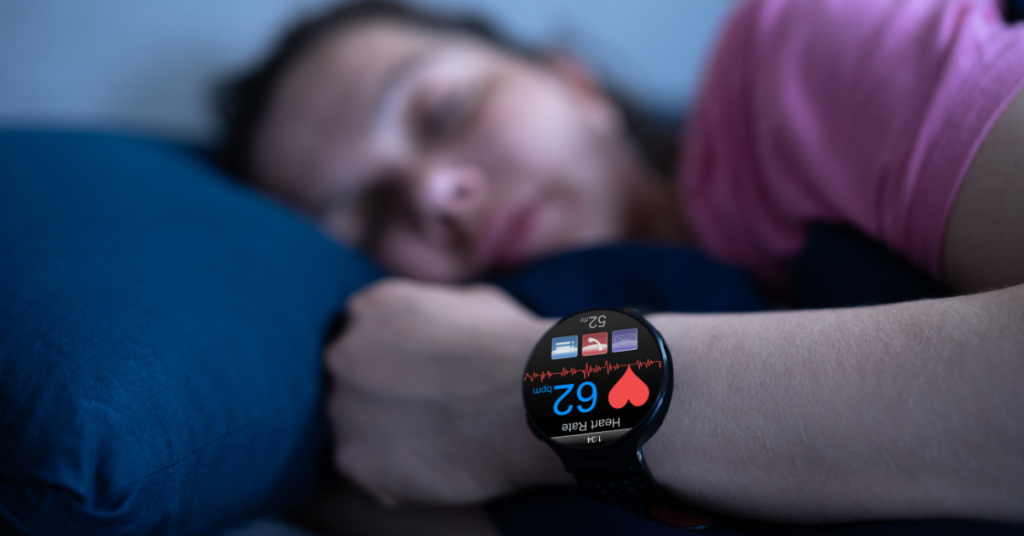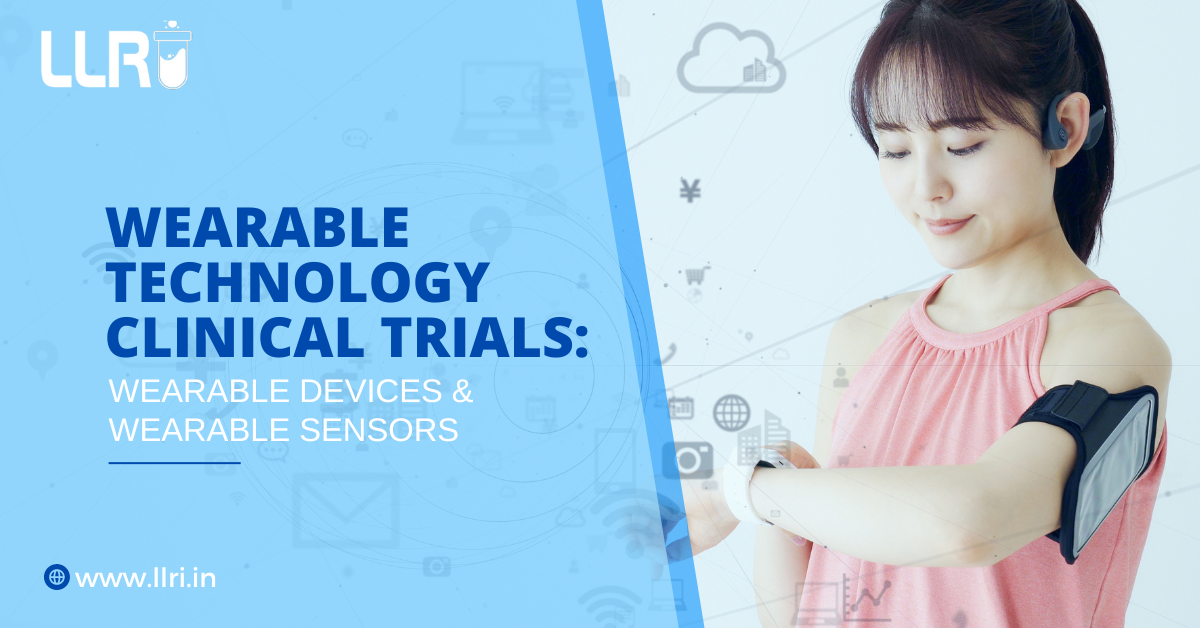Wearable Technology Clinical Trials: Who doesn’t have a smart watch these days, right? Wearable technology clinical trials are changing the game in medical research. Imagine if your fitness tracker could do more than just count steps—it could also help doctors monitor your health in real-time. That’s exactly what’s happening with wearable technology in clinical trials.
Not sure what we are getting at? Let us break it down for you.
Wearable Technology Clinical Trials: Overview
The term wearables in clinical trials encompasses all types of wearable technology used in medical research. This includes not just sensors and tracking devices but also smart textiles and other innovative wearables. The use of wearables in clinical trials is becoming increasingly common due to their numerous benefits.
The ease of data collection facilitated by wearable devices in the recent has been especially beneficial for medical researchers, as they can gain more accurate information about patient health. It has also enabled researchers to develop advanced algorithms that can analyze large amounts of data in real-time.
Wearable technology has definitely aided in the simplifying the trends and patterns in human health. In simple terms, wearable technology clinical trials bring a new level of convenience and accuracy to medical research.

5 Mostly Used Wearable Devices In Clinical Trials
Wearable devices in clinical trials include a range of gadgets designed to monitor various health metrics. Here are some common types of wearable devices used:
- Smartwatches: These are among the most popular wearables, capable of tracking heart rate, steps, and even electrocardiograms (ECGs).
- Fitness trackers: Devices like Fitbit and Garmin track physical activity, sleep quality, and other health metrics.
- Wearable ECG monitors: These specialized devices provide continuous heart monitoring, useful for detecting irregularities.
- Smart clothing: Embedded with sensors, these garments can monitor vital signs and movement patterns. Although not that popular or a part of the everyday man’s wardrobe, smart clothing is slowly making its way into the mainstream.
- Medical-grade wearables: Devices like continuous glucose monitors (CGMs) for diabetics or wearable ECG monitors for heart patients.
These wearable devices can monitor various health metrics like:
- Heart rate
- Physical activity
- Sleep patterns
- Blood pressure
- Blood sugar levels
Using wearables in clinical trials, researchers can gather continuous, real-time data from participants. This helps in getting a clearer picture of how treatments work in the real world, outside of a hospital setting.
For example, in a diabetes study, continuous glucose monitors can track blood sugar levels 24/7, offering insights that traditional methods simply can’t match.
| Type of Sensor | Function | Applications |
| Accelerometers | Measure motion and orientation | Fitness trackers, smartwatches |
| Heart Rate Sensors | Measure heart rate by detecting blood flow | Fitness bands, smartwatches |
| Electrocardiogram (ECG) Sensors | Record electrical activity of the heart | Wearable medical devices |
| Electromyography (EMG) Sensors | Measure muscle electrical activity | Wearable rehabilitation devices |
| Temperature Sensors | Measure body or environmental temperature | Smart clothing, patches |
| Galvanic Skin Response (GSR) Sensors | Measure skin conductivity (sweat levels) | Stress and emotional monitoring devices |
| Blood Oxygen Sensors (Pulse Oximeters) | Measure oxygen saturation in the blood | Fitness bands, medical wearables |
| Glucose Sensors | Measure blood glucose levels non-invasively | Patches, smartwatches for diabetic monitoring |
| Pressure Sensors | Measure pressure changes | Wearable insoles for gait and posture monitoring |
| Electroencephalography (EEG) Sensors | Measure electrical activity in the brain | Headbands, caps for brain activity monitoring |
| Hydration Sensors | Measure hydration levels | Patches, smart clothing for hydration monitoring |
| Environmental Sensors | Detect UV radiation, pollution, temperature, etc. | Wearables for environmental health data |
Wearable Devices In Clinical Trials: What Are The Benefits?
The modern approach to medical research where the participants use wearable devices to monitor health data is definitely making changes in the clinical trial sphere. Here are why wearable devices in clinical trials is such a cool concept:
- Real-time data collection: Wearable devices in clinical trials provide continuous, real-time data, which enhances the accuracy of clinical trials.
- Real-time feedback: Some wearables can provide immediate feedback to participants, helping them manage their condition more effectively during the trial.
- Remote and continuous monitoring: With wearable devices in clinical trials, participants can be monitored remotely, reducing the need for frequent clinic visits. Also, real-time data collection gives a more accurate picture of a patient’s health.
- Improved compliance: Wearable devices can remind participants to take medications or perform specific activities, improving compliance rates.
- Big data: The large amount of data collected can be analyzed to uncover new insights into health and disease.
- Increased participant engagement: Patients are more likely to stay engaged in the study because they can continue their daily routines with minimal disruption.
- Patient-centered research: With wearables in clinical trials, participants can go about their daily lives without constant visits to a clinic, making the trial experience less burdensome.

Wearable Sensors Clinical Trials: A Step Towards Tech Evolution?
Wearable sensors clinical trials are definitely a step further in this tech evolution – and these wearable sensors clinical trials focus on the sensors embedded in wearable devices. Incorporating wearables in clinical trials has revolutionized how studies are conducted and the kind of data that can be collected, paving way for the furthering of medical advancements.
But before we go deep into wearables in clinical trails, let’s explore what are wearable sensors clinical trials.
What Are Wearable Sensors?
Wearable sensors are devices that are used by people to monitor various physiological and environmental parameters. These wearable sensors are lightweight devices that can be worn on the body. They are meshed into wearable items such as watches, bands, clothing, and glasses, providing real-time data for health, fitness, and other applications.
There are four main types of wearable sensors: chemical, electromechanical, optical, and electrical sensors.
- Chemical sensors are the type of wearable sensors that can measure the chemical levels in the body through sweat and other bodily fluids. For example, glucose monitors for diabetes, sensors to measure stress hormones in sweat etc.
- Electromechanical sensors are one of the most common types of wearable sensors. These apply electrical measurements to track movements of the body and measure the physical activity.
- Electrical sensors are primarily used to measure heart rate or brain activity. As the name suggests, these types of sensors use electrical signals to read the bodily activities. For example, electrocardiogram (ECG or heart rate monitor).
- Optical sensors are very common wearable devices and are primarily preferred because they are small, non-invasive and can be used for long hours of time. That is, optical sensors can be worn on the body without it causing any type of irritation at all. Optical sensors use various biological signals like heart rate, oxygen saturation, or more recently blood pressure.
While wearable devices in clinical trials have many benefits, there are some challenges to using wearable technology in clinical trials:
- Data management: The huge amount of data collected needs to be processed and analyzed, which can be complex and wearables in clinical trials help ease this process.
- Privacy concerns: Ensuring patient data is secure and private is crucial.
- Device reliability: Wearables need to be accurate and reliable over long periods.
- Patient acceptance: Some patients might be resistant to wearing devices all the time.

On A Final Note…
Wearable technology clinical trials are revolutionizing the field of medical research. The integration of wearable devices and sensors into clinical trials, researchers can collect valuable data that provides a deeper understanding of health and disease.
Of course, there are some challenges with wearables in clinical trials, but the benefits far outweigh the drawbacks, promising a future where medical research is more accurate, efficient, and patient-friendly. As wearable technology continues to evolve, we can expect even more exciting developments in the field of clinical trials.
Visit Us To Know More!
FAQs
What wearable devices are used in clinical trials?
Wearables in clinical trials are very common these days; and the most commonly used wearable devices in clinical trials are Smartwatches, fitness trackers, wearable ECG monitors, smart clothing, medical-grade wearables etc.
What are the 4 wearable devices?
Smartwatches, activity tracker, smart glasses and wearable ECG monitors are some of the most commonly used wearables in clinical trials.
What are connected devices for clinical trials?
Clinical trial-connected devices are electronic software and systems that are developed with the aim of creating, modifying, maintaining, archiving, retrieving and transmitting clinical trial data.

